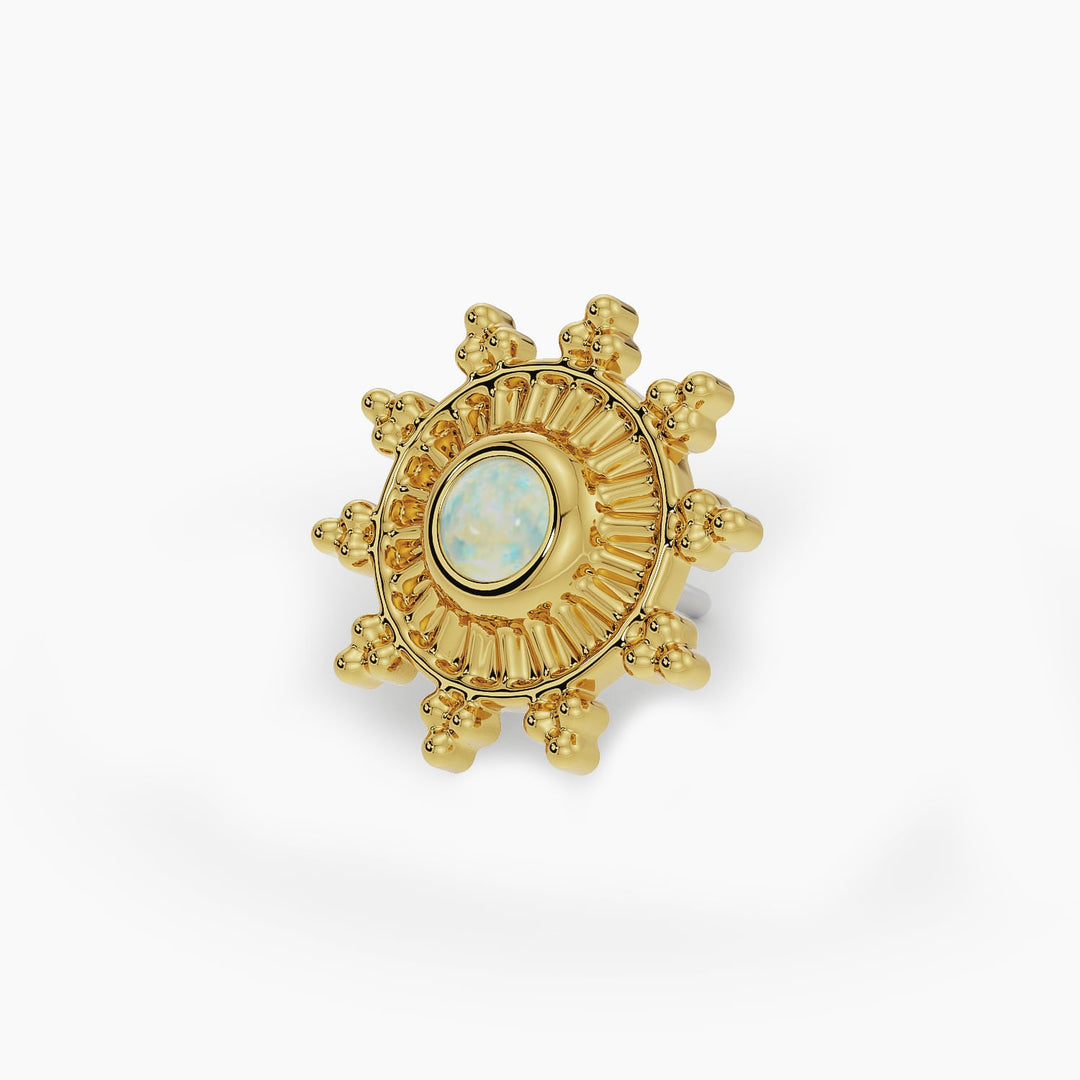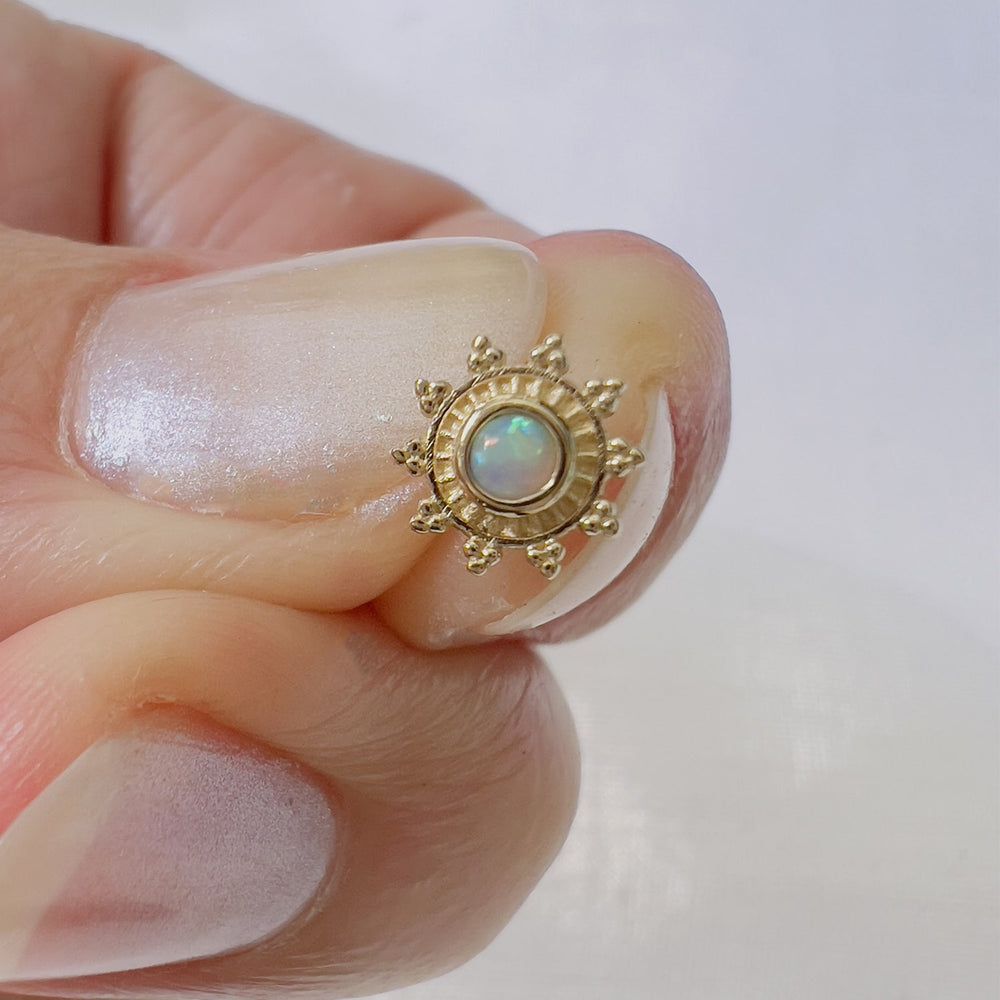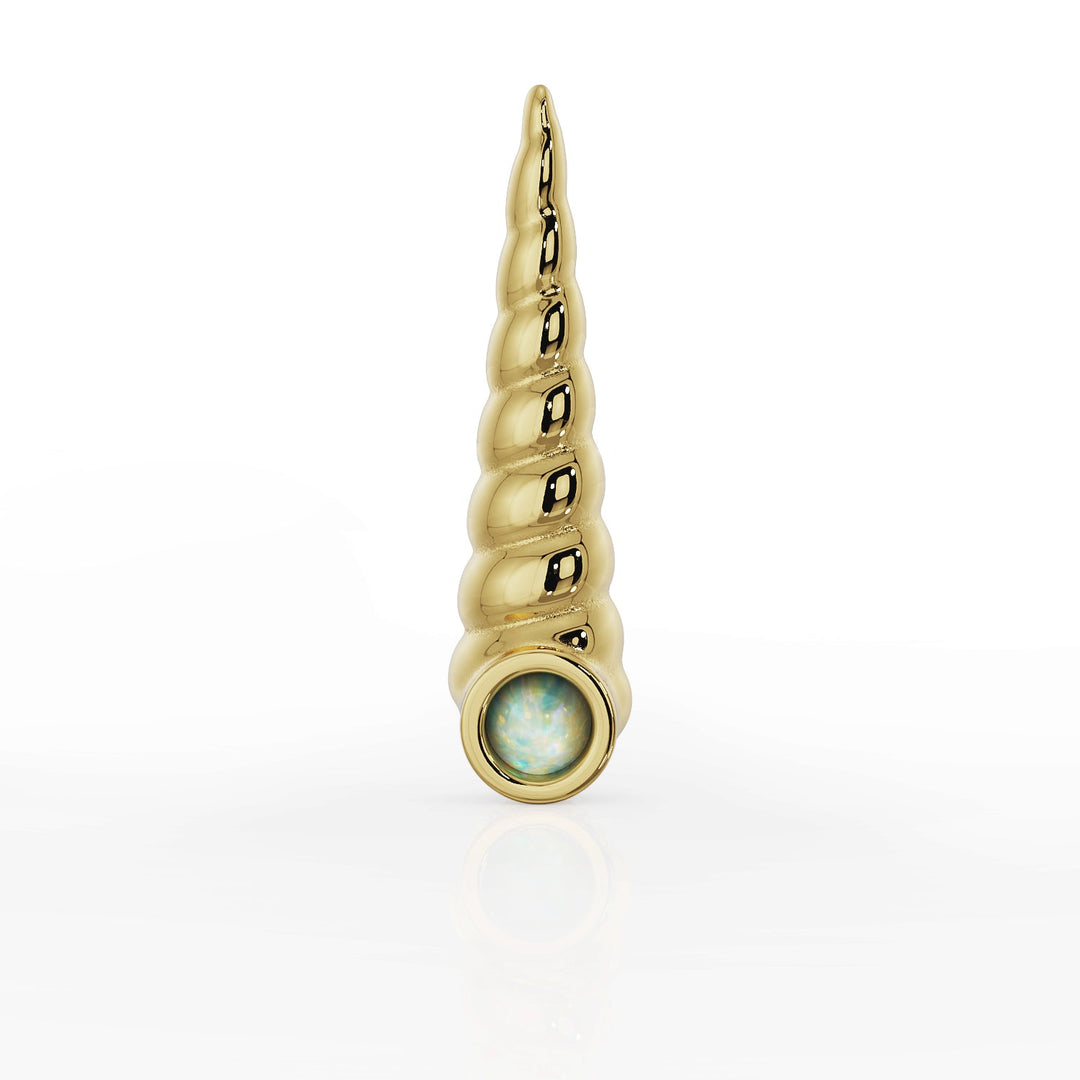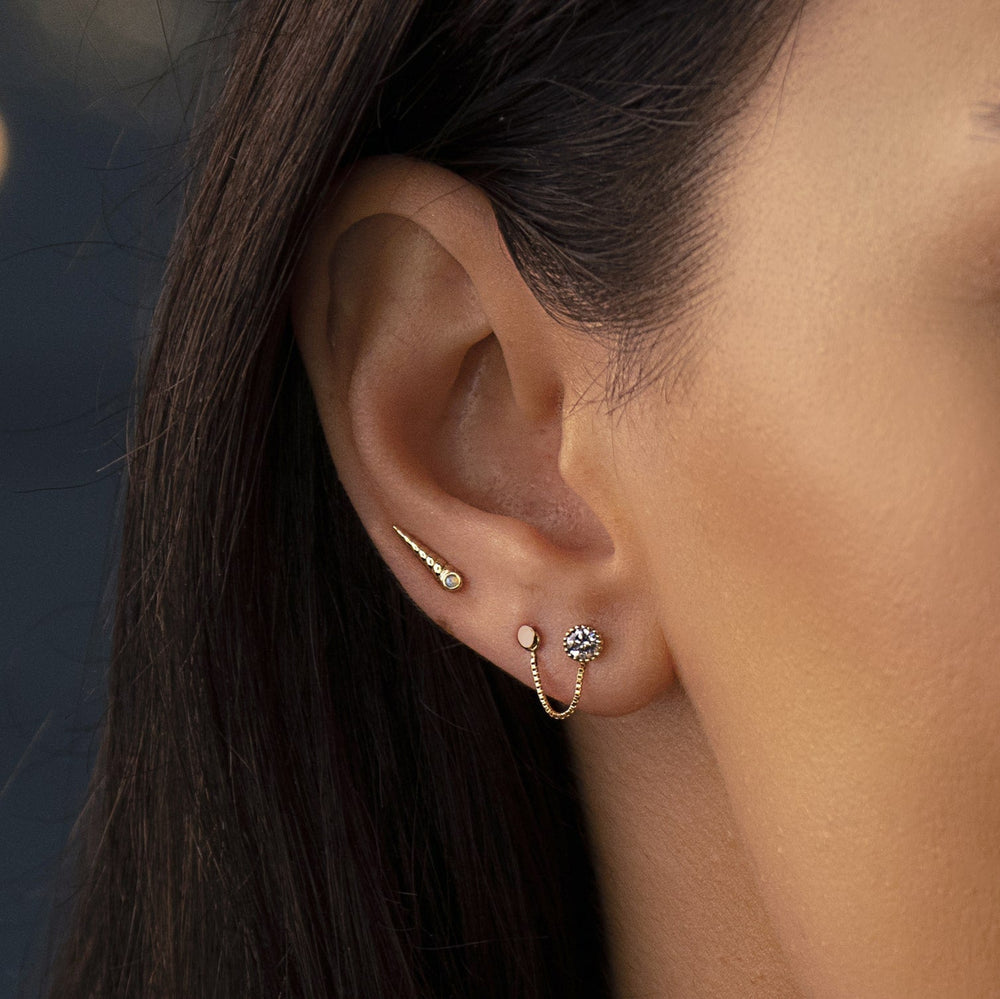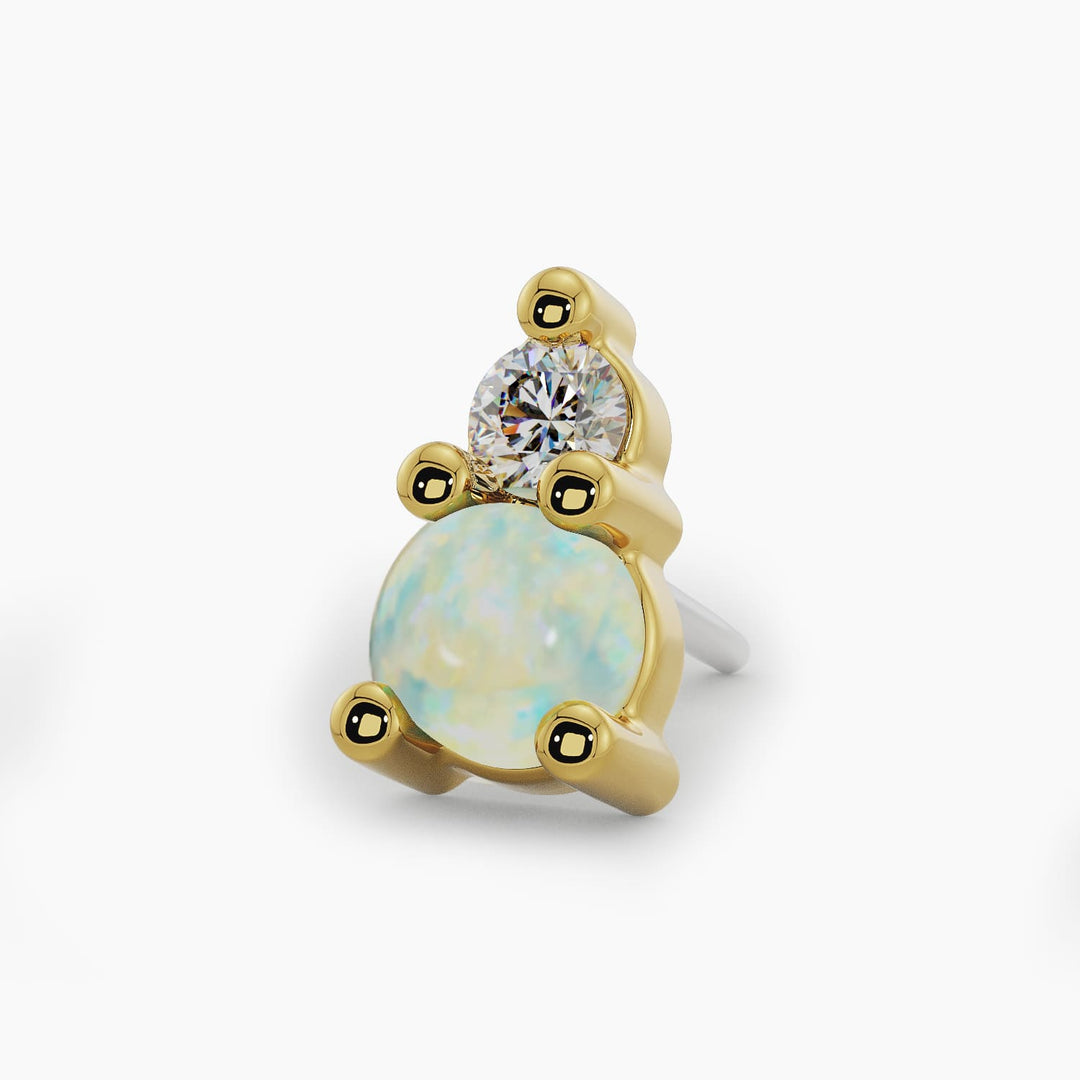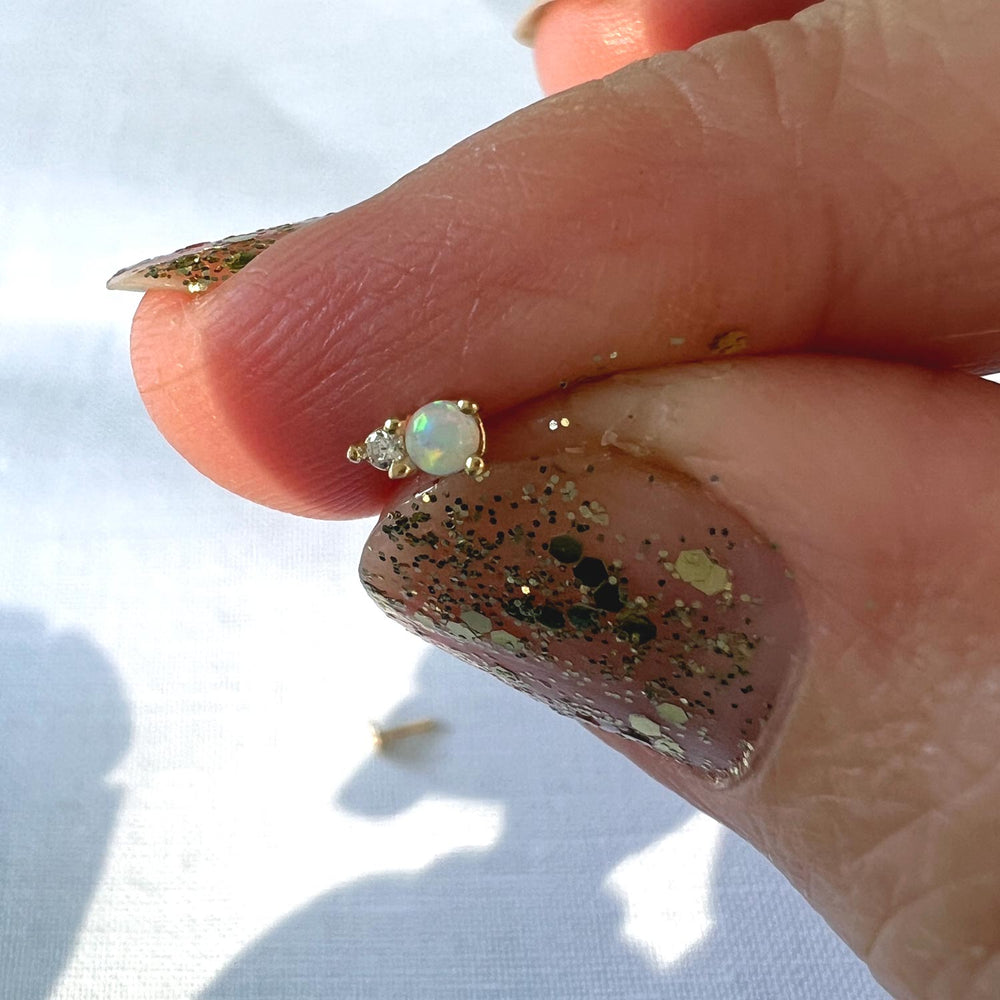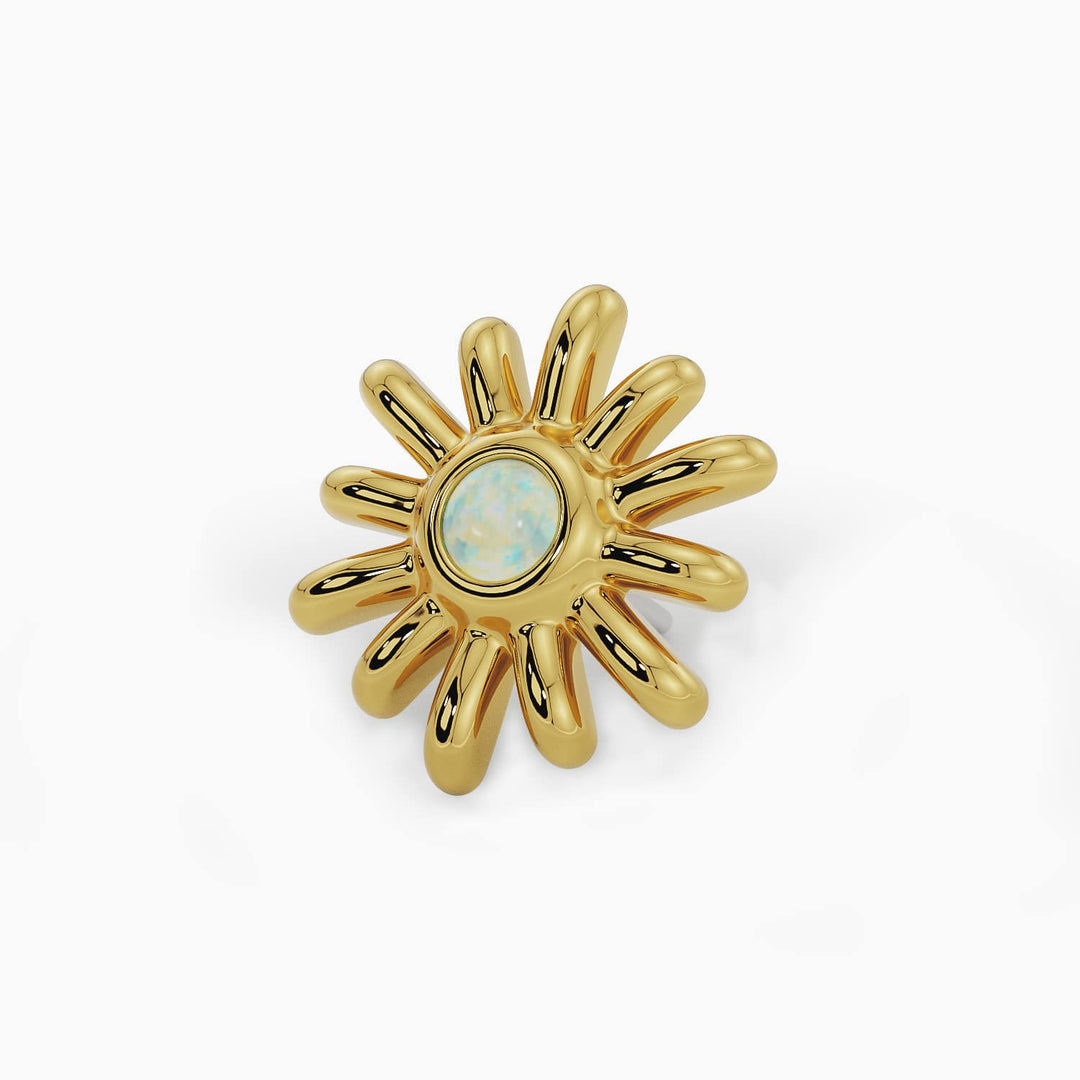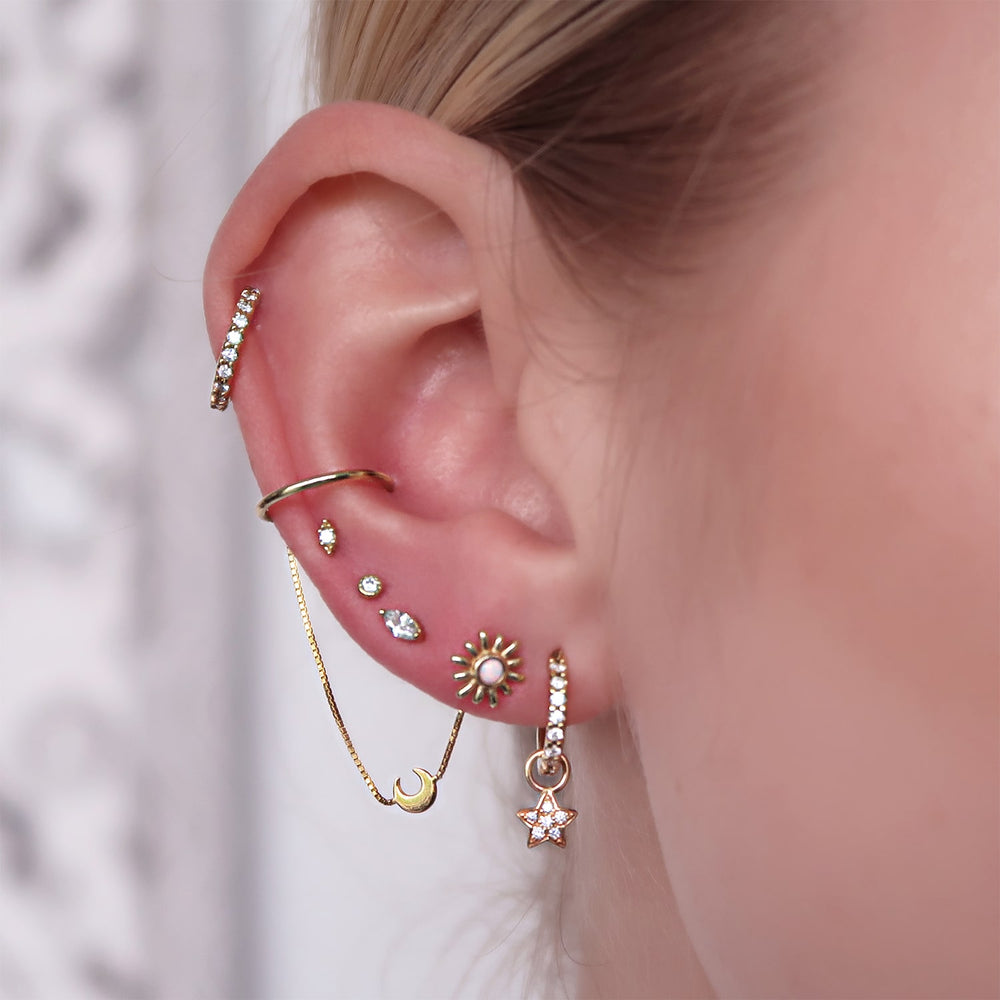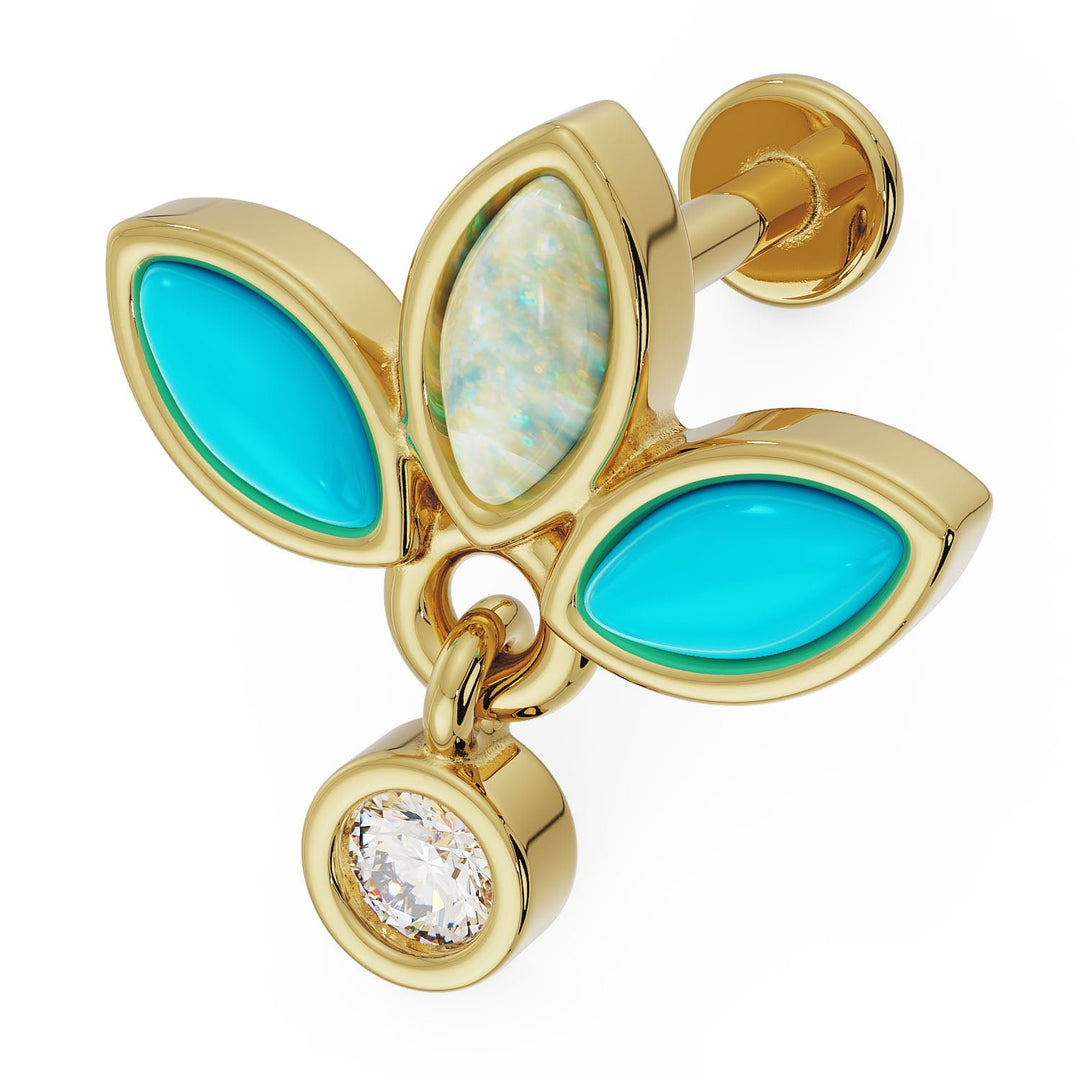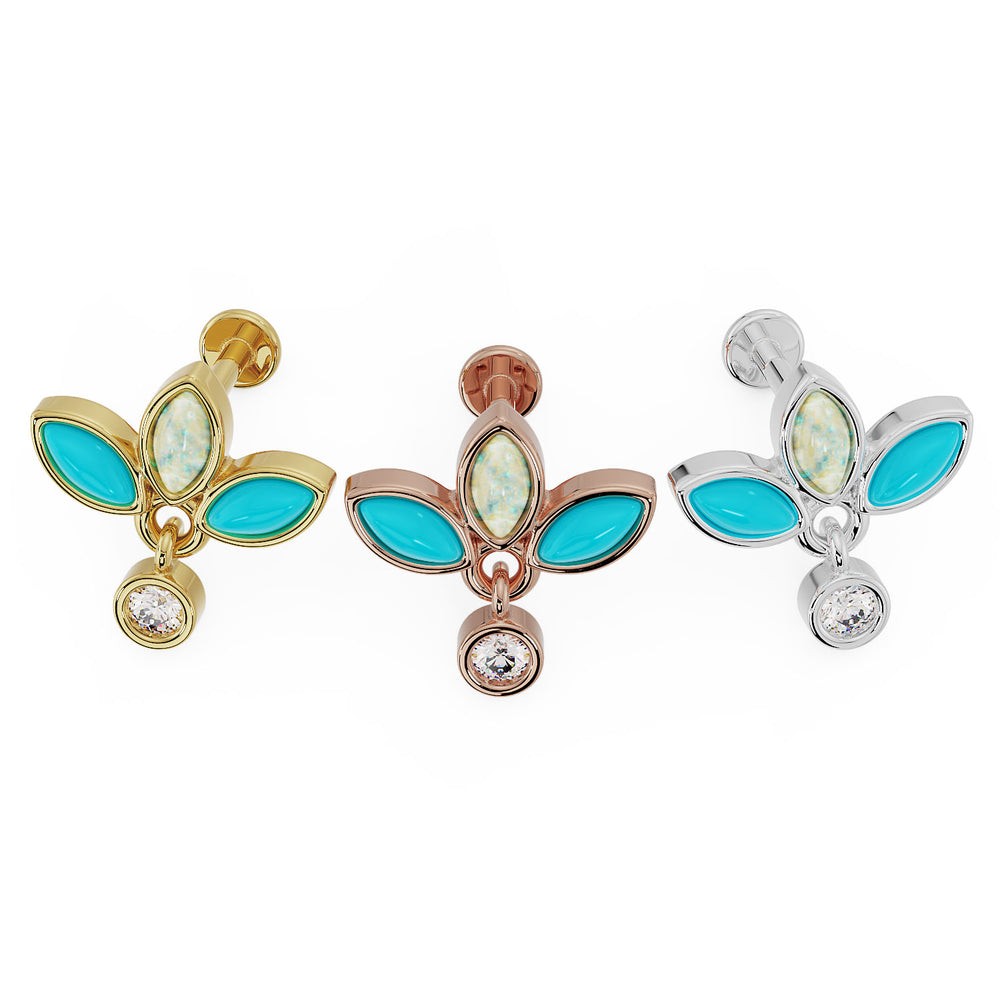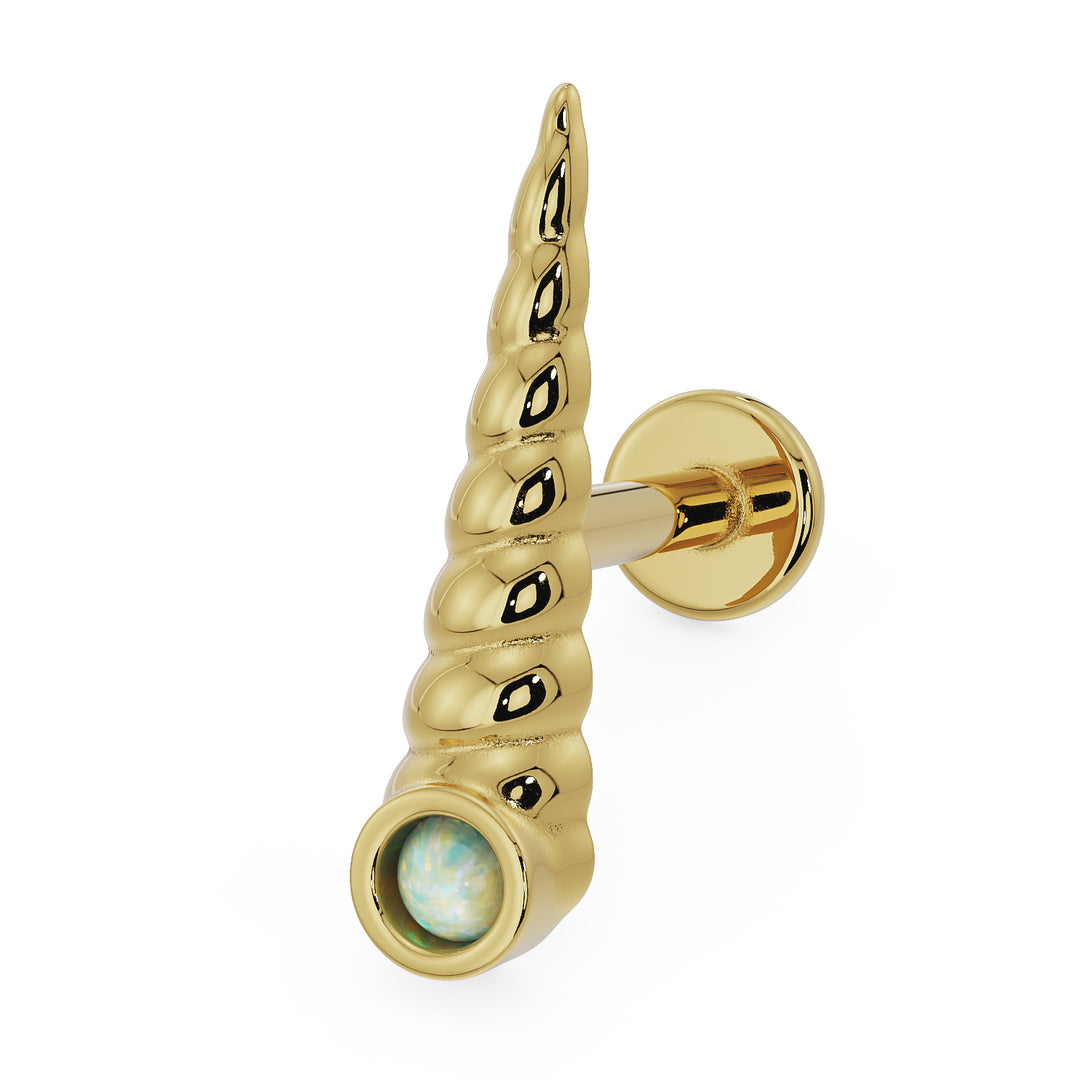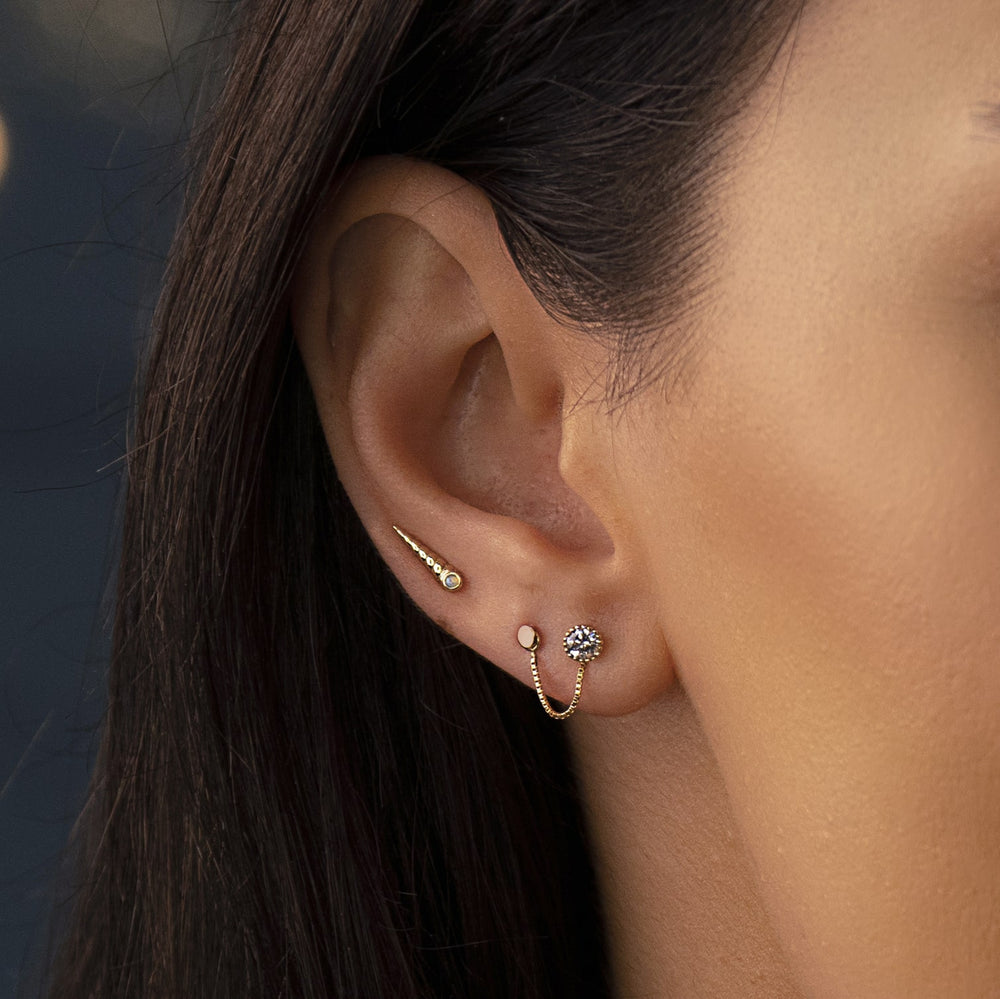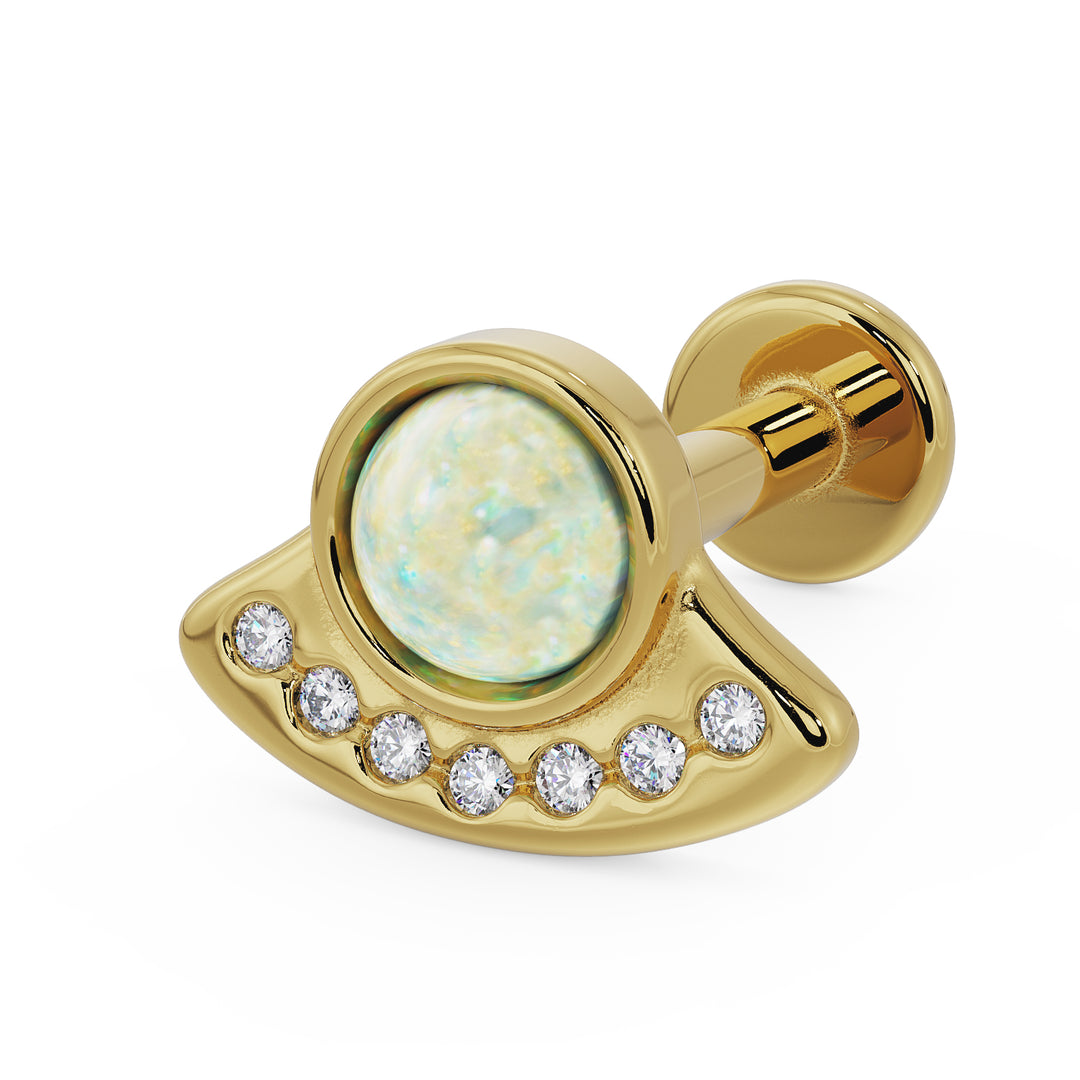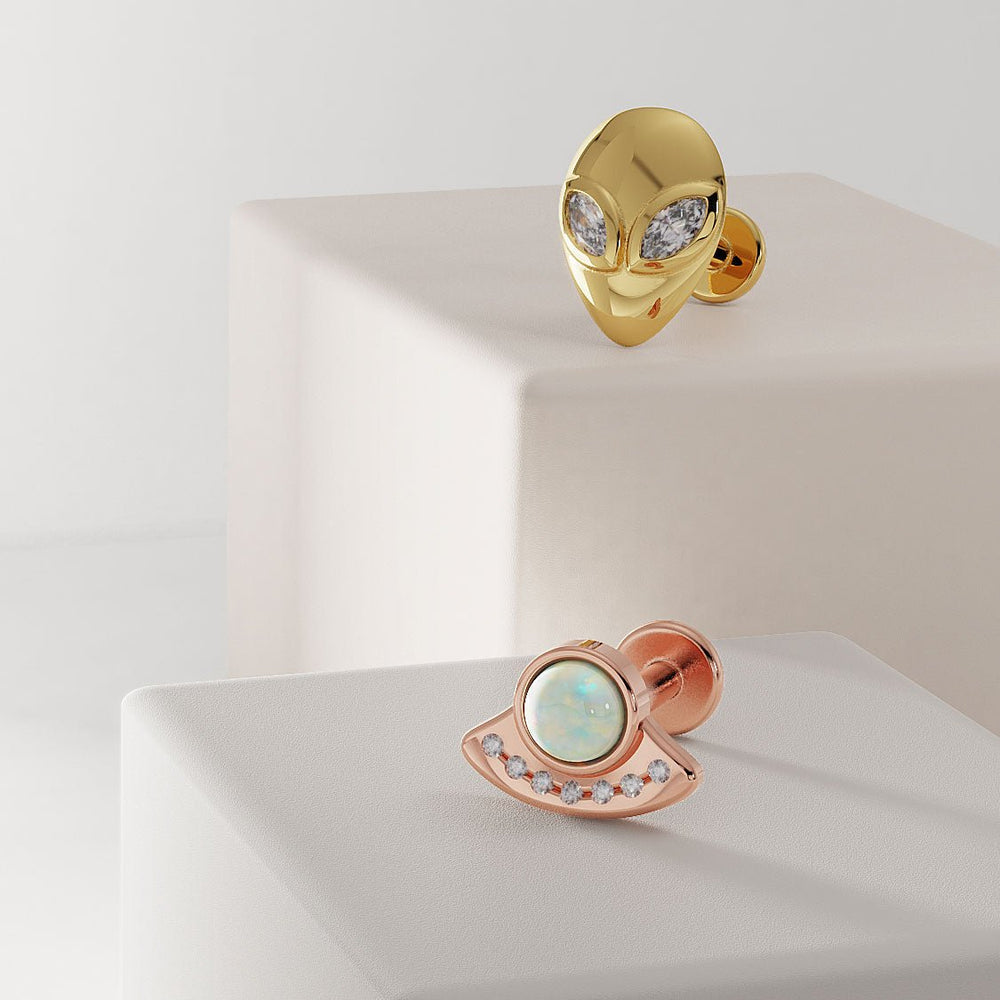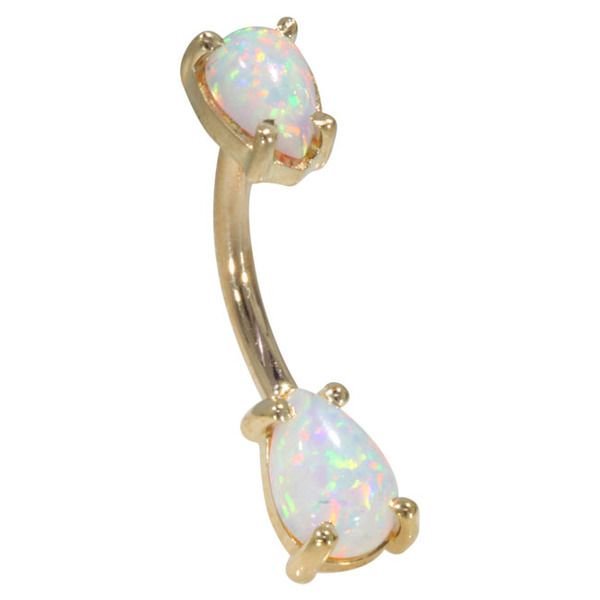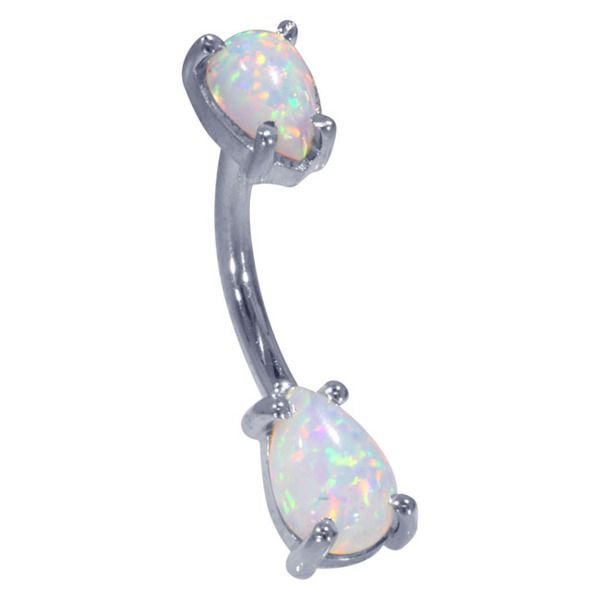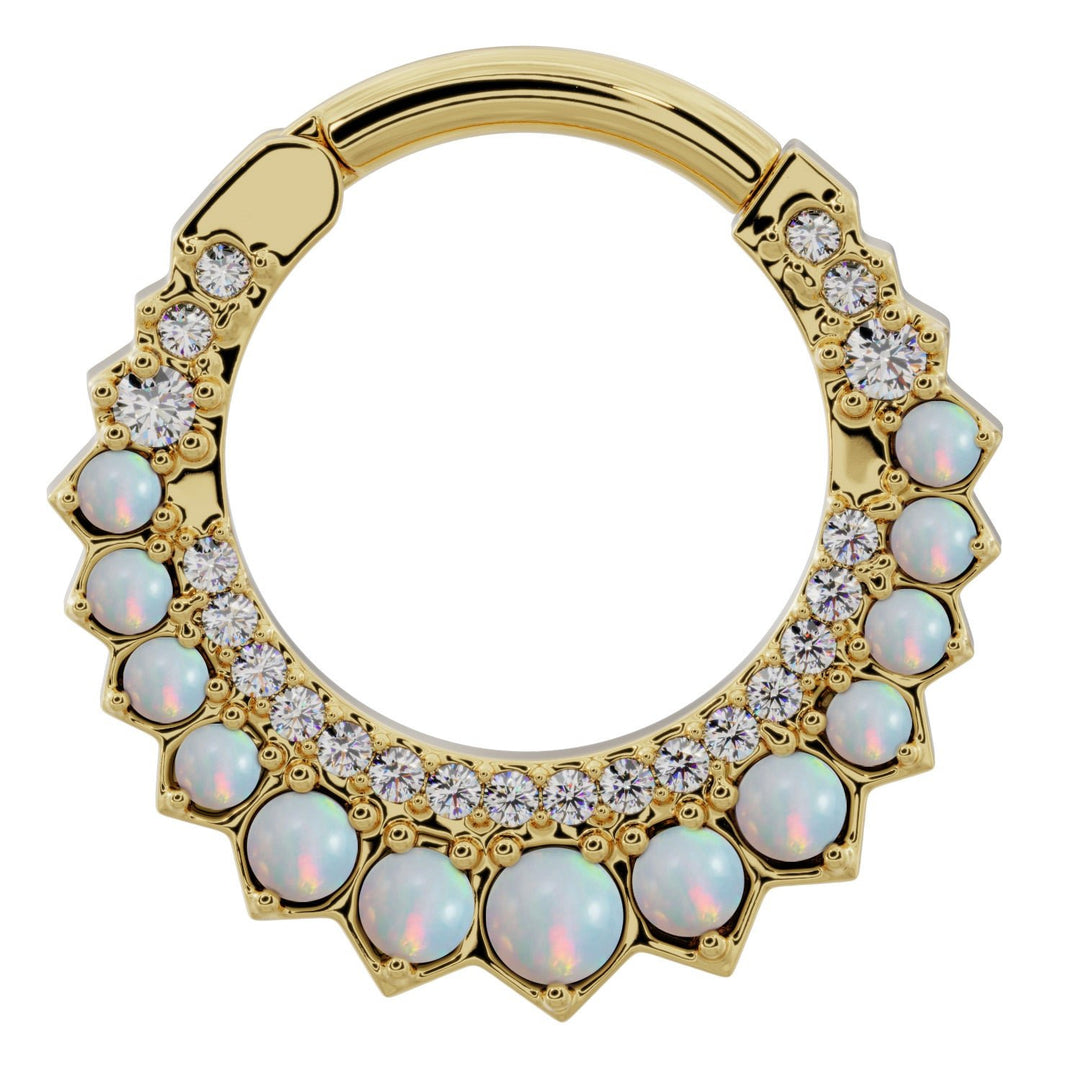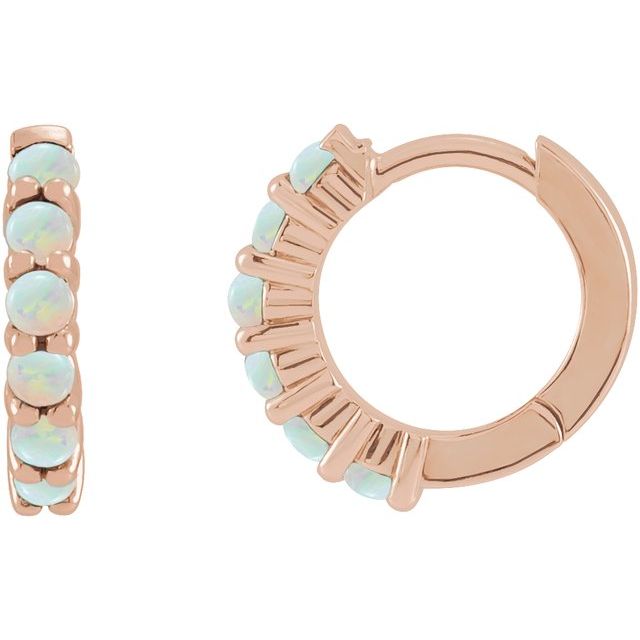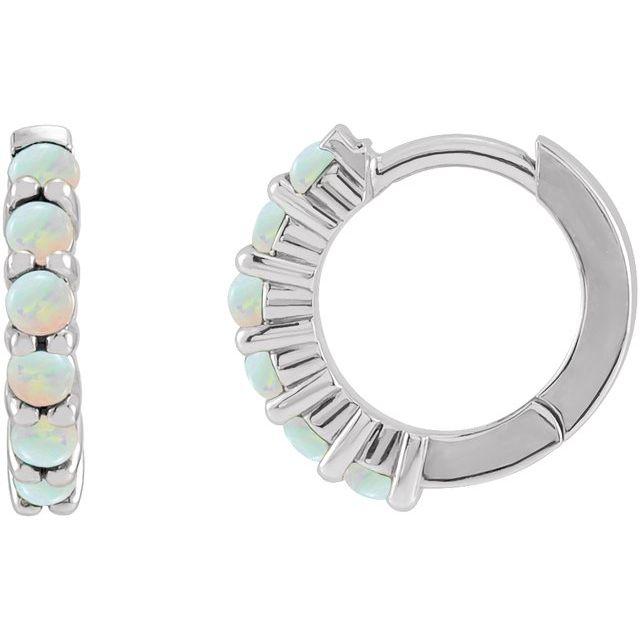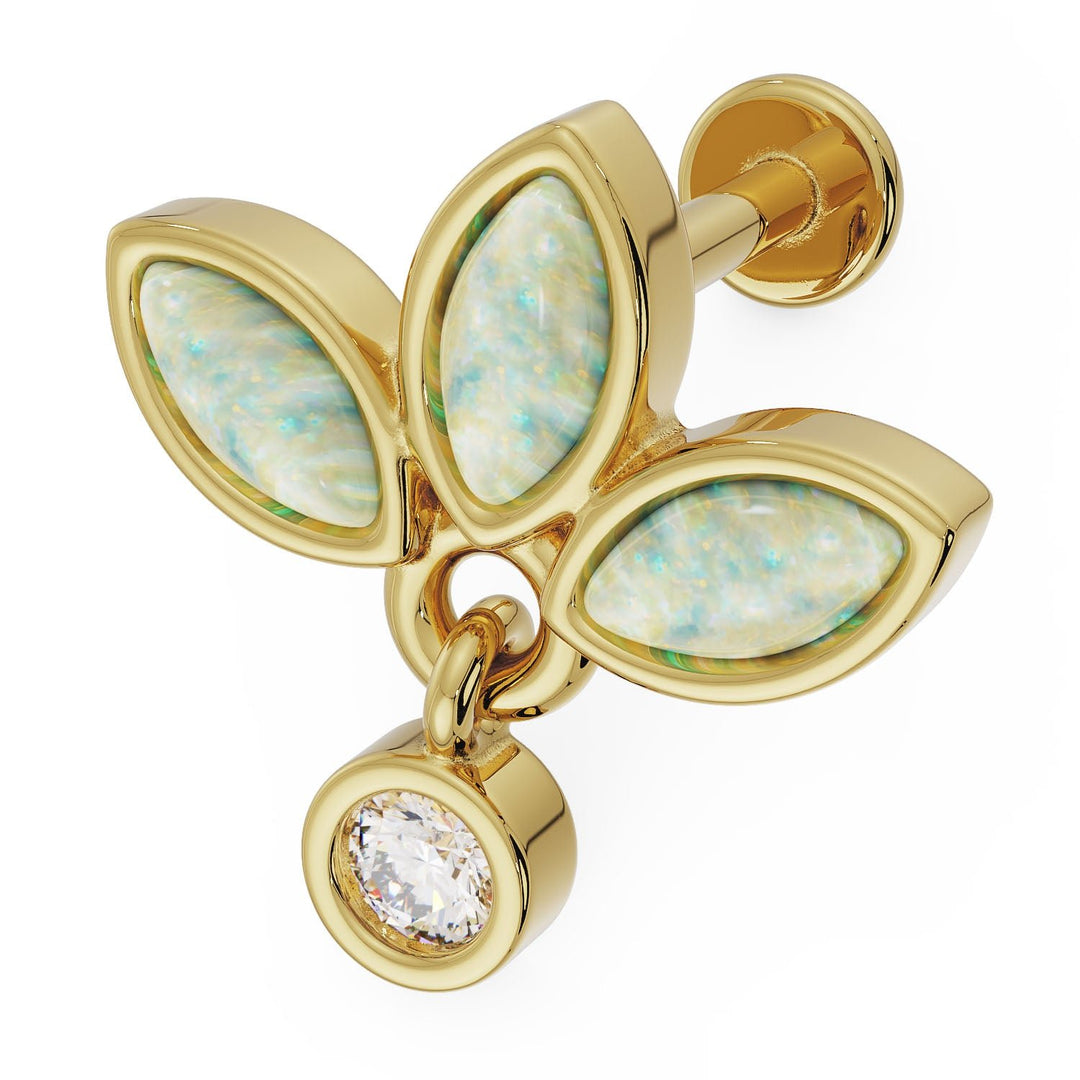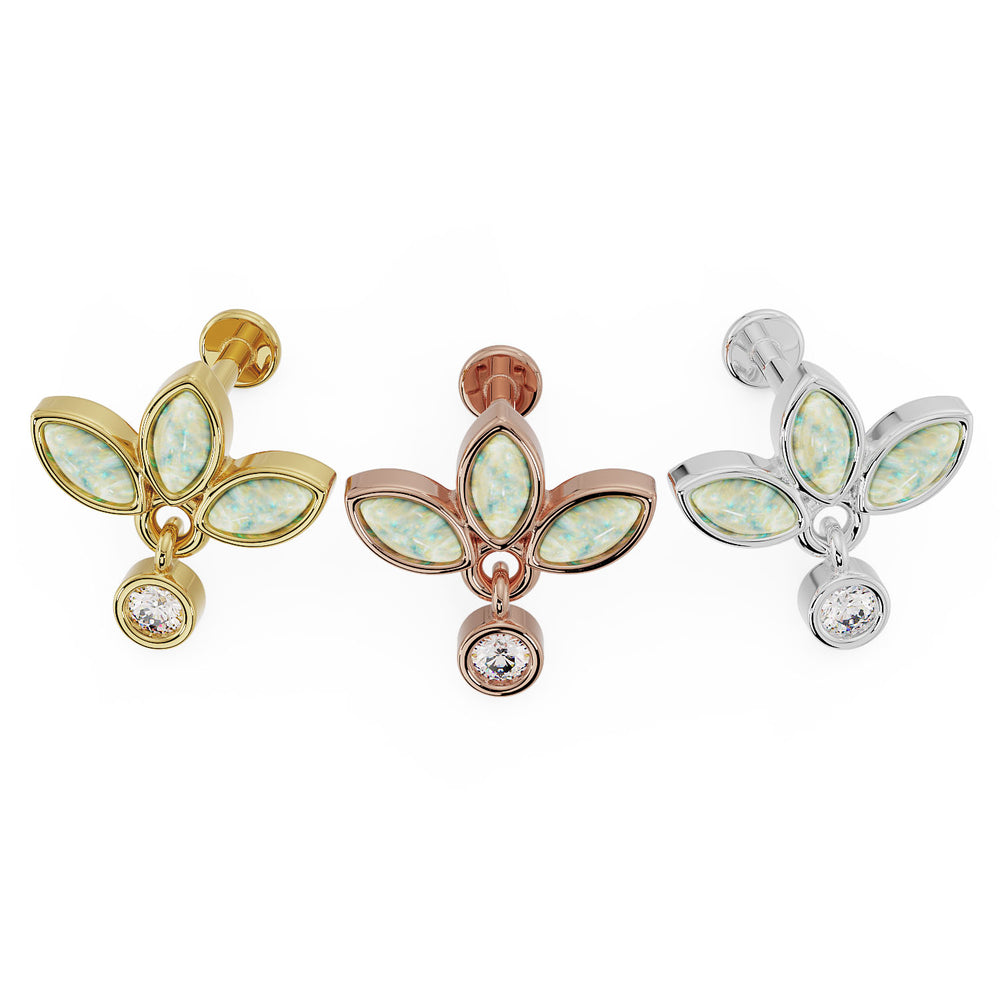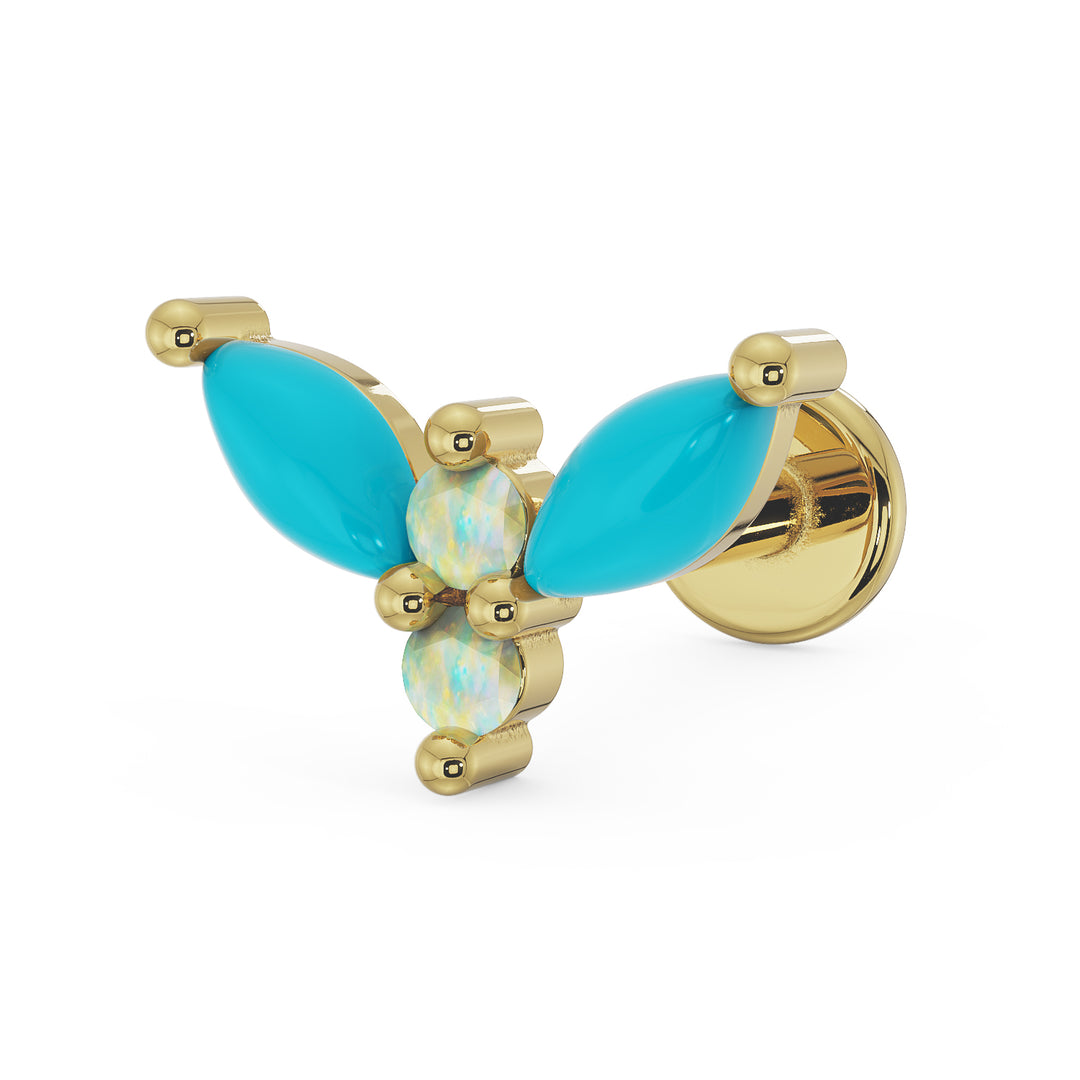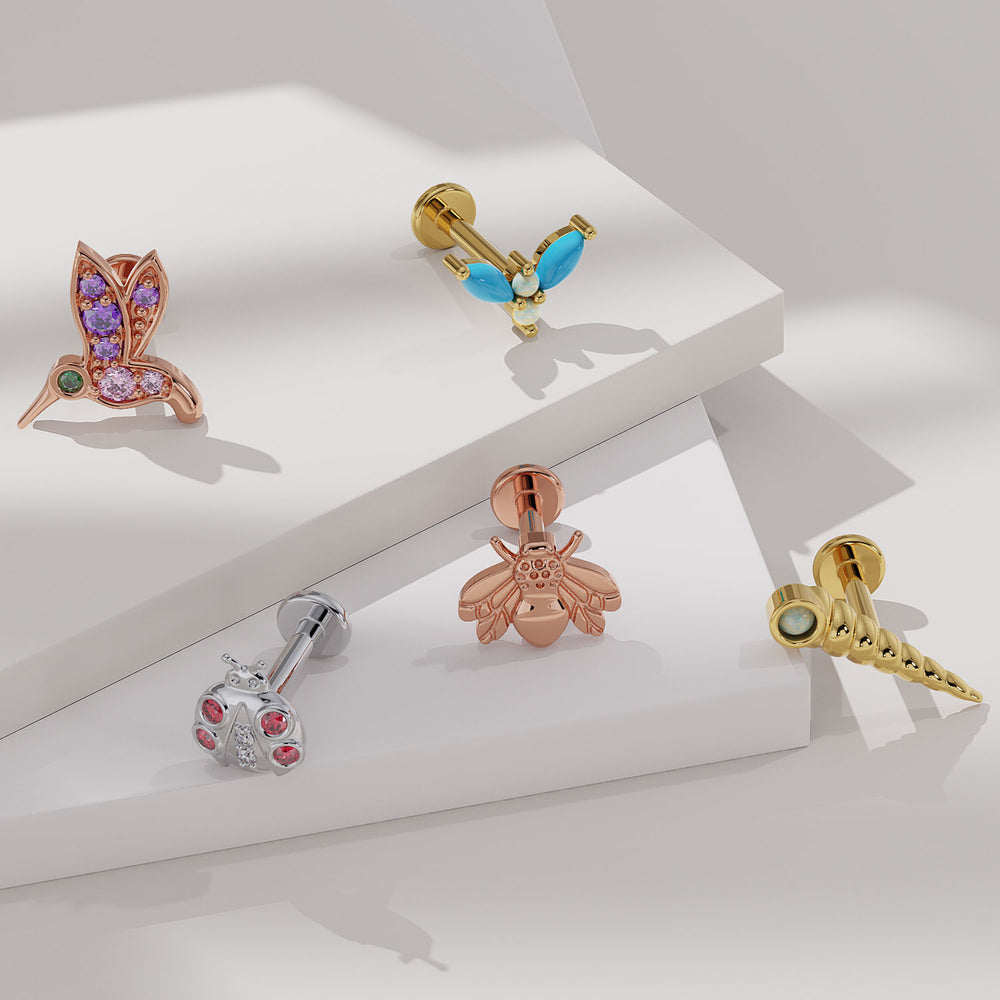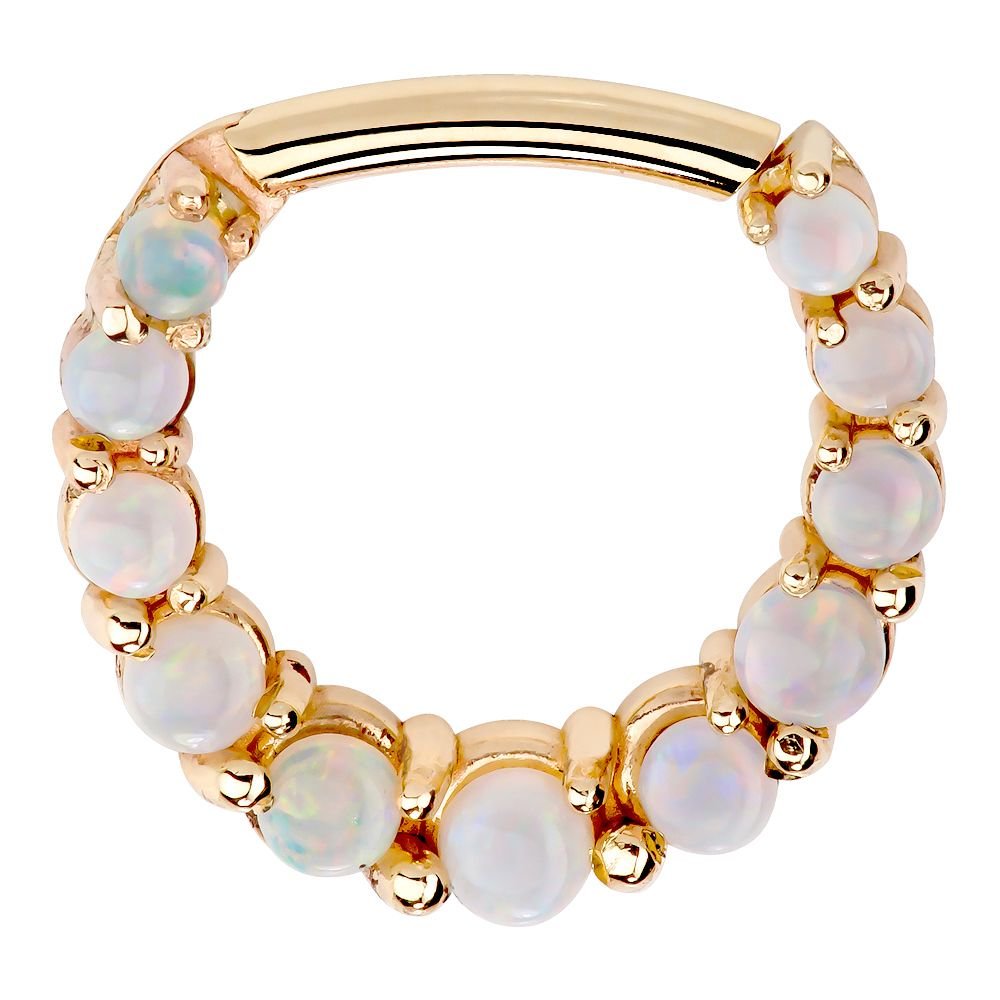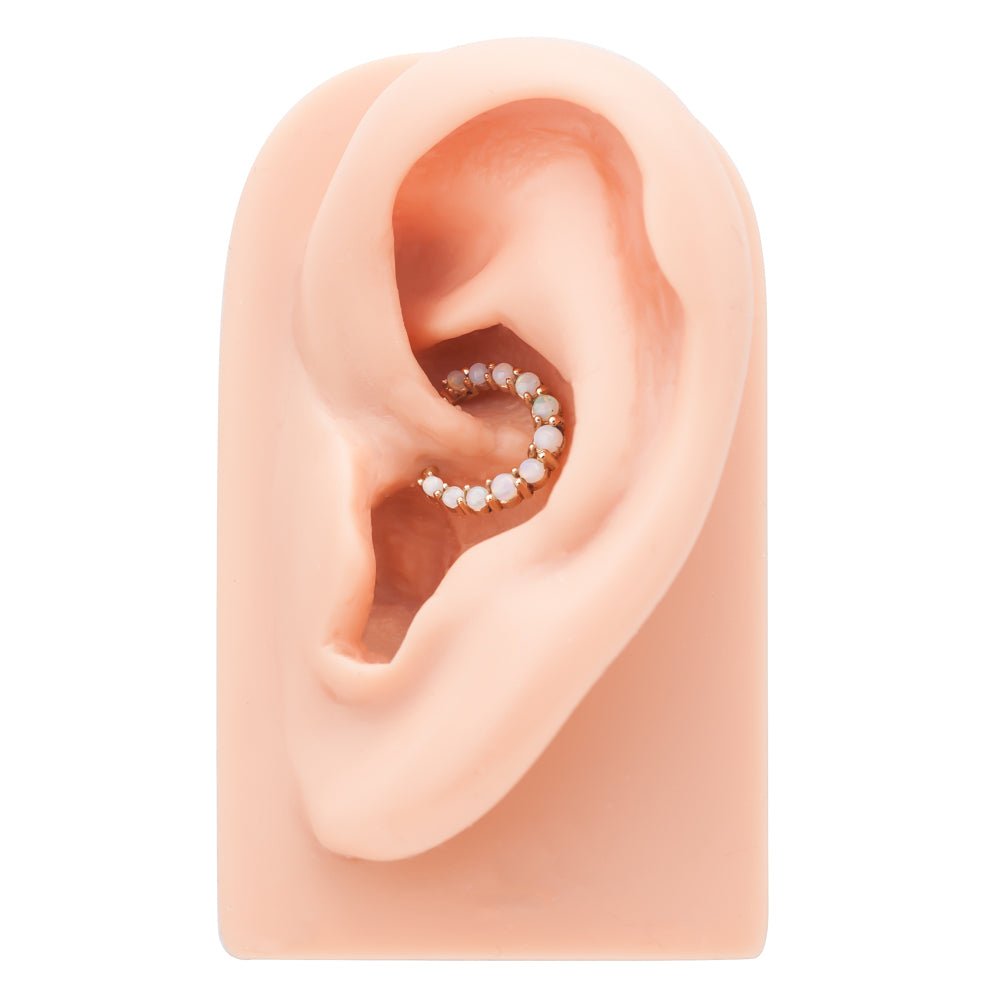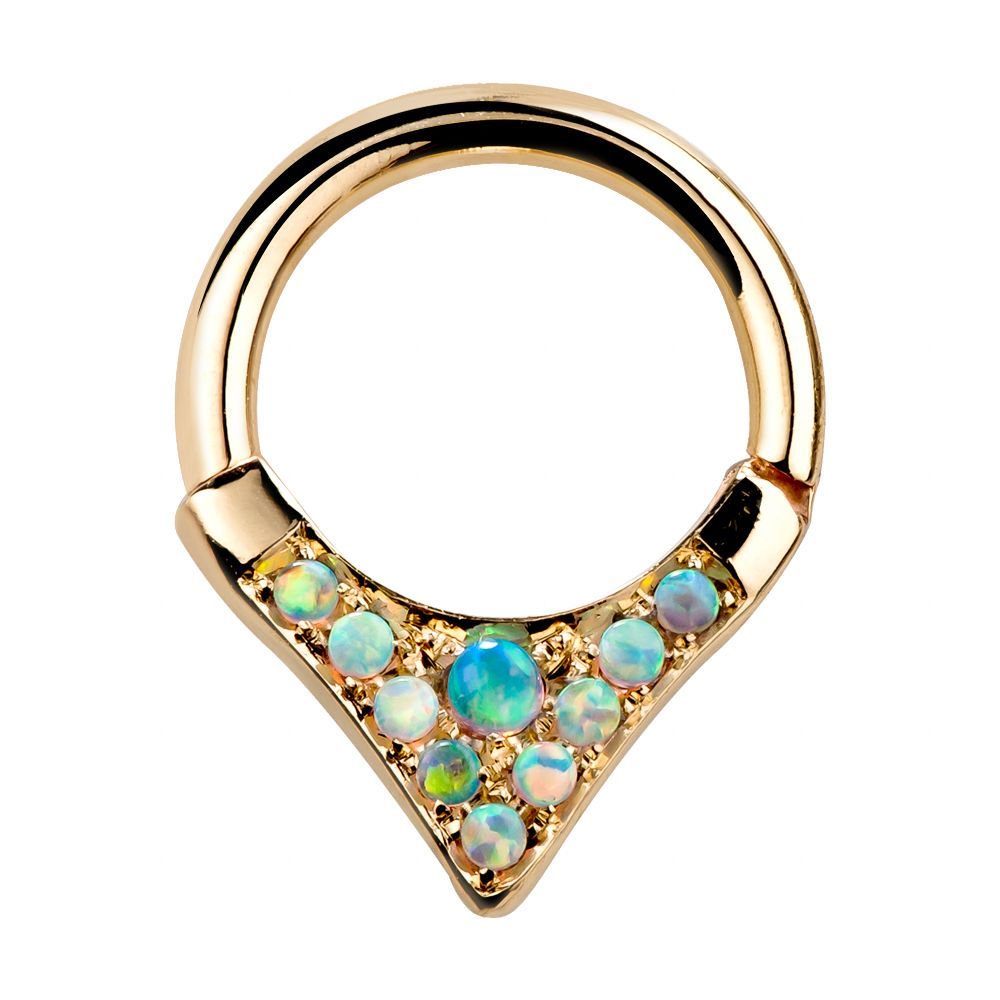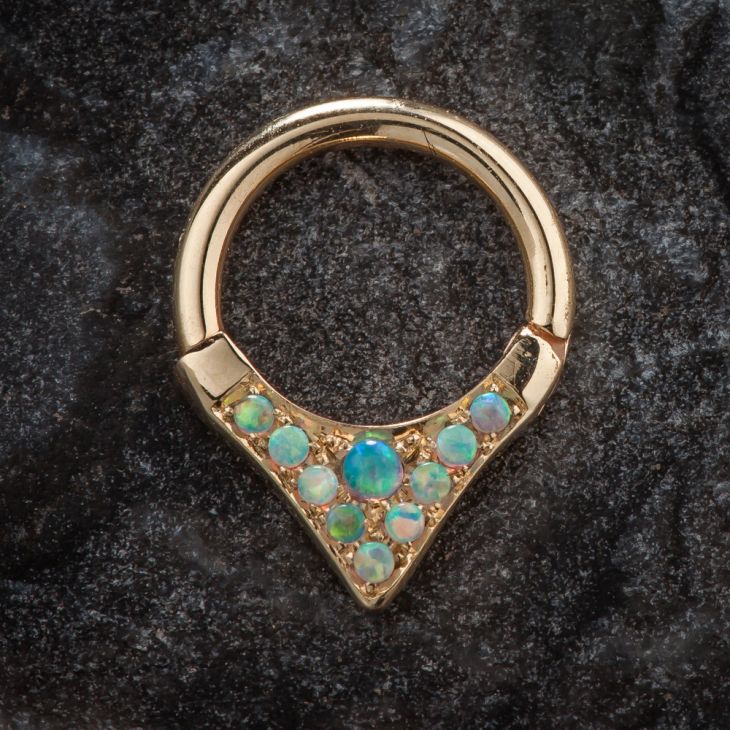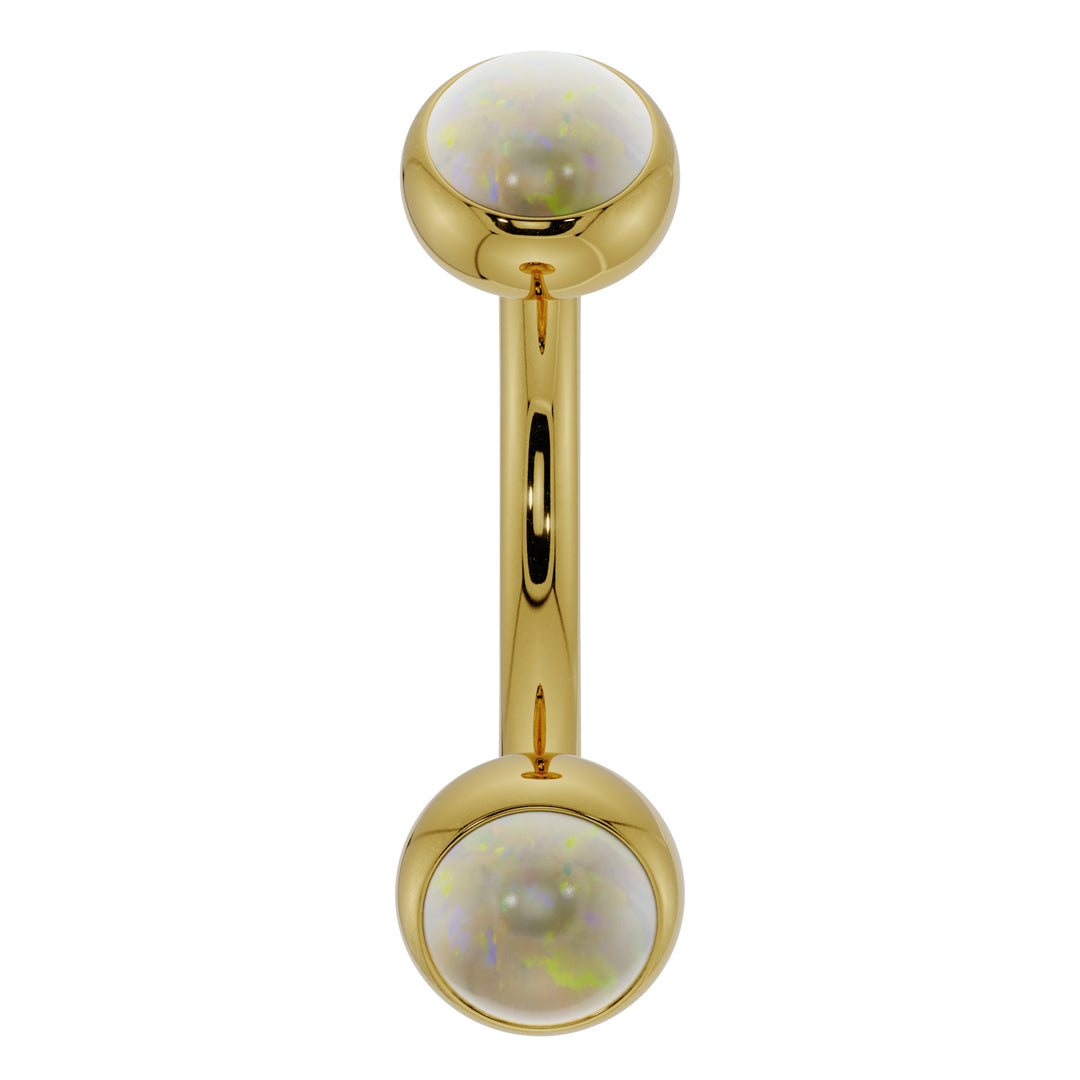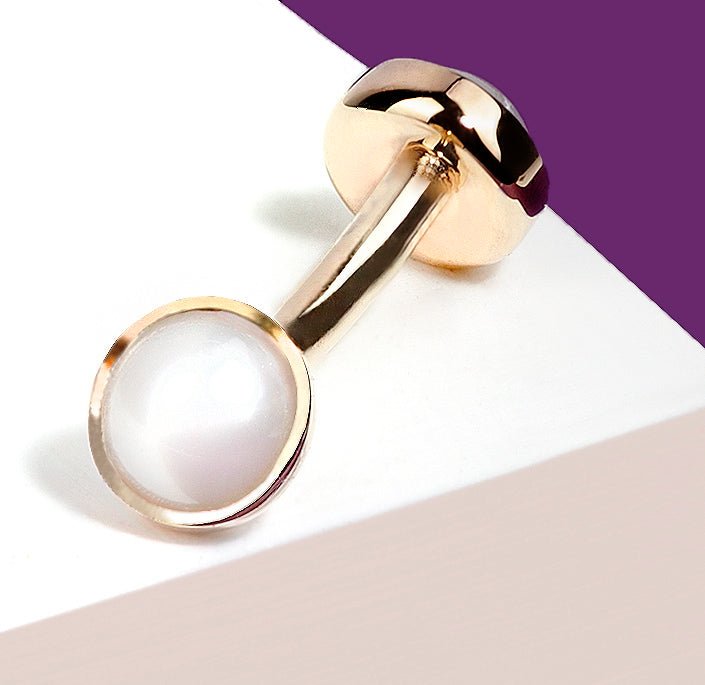How To Shop For Opal Body Jewelry


Opals—characterized by swirling colors in a semi-translucent stone—are among the most alluring gemstones. Their brilliant tones are a testament to the wonders of nature; it seems impossible that such beauty can be created organically.
Perhaps this is why opals are often associated with passion. Only this gemstone, with its unique tones and shimmering color, can capture the complexity of human emotion.
The intricate style of the opal makes it a stunning gemstone for jewelry, but it’s also a bit unpredictable; each opal is unique, which means that no two pieces of opal jewelry will be the same.
Here’s a quick guide to opals and shopping for opal jewelry.
What Are Opals?
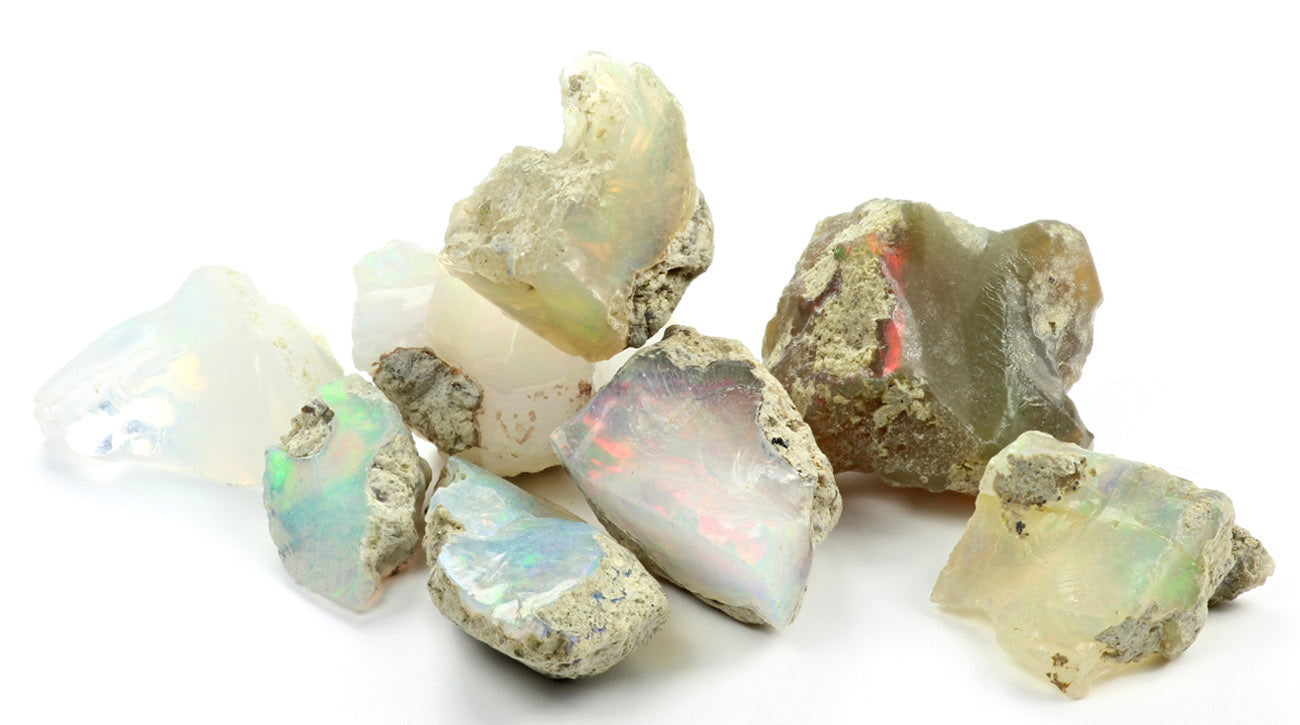

Opals are a natural gemstone that can be found all over the world. Although opals have been found in jewelry dating back to 250 BC, they didn’t become a popular jewelry gemstone until the early 1900s. This shift occurred after the discovery of opals in Australia. After a 14-year-old boy found an opal on a camping trip, an “opal rush” was spurred in Australia, and commercial demand rose. Today, Australia still provides the majority of opals.
Opals are formed over thousands of years. The layered colors are a result of silica-rich groundwater flowing through faults in sandstone rocks. This contributes to its unique coloring. Additionally, rarer tones are created when other minerals mix with the water, creating unreal hues.
While opals themselves are common, it’s actually fairly rare to find opals with stunning, swirling color. Certain opal colors are rarer than others. Most opals only contain a single tone rather than intricate swirls.
What Are Synthetic Opals?
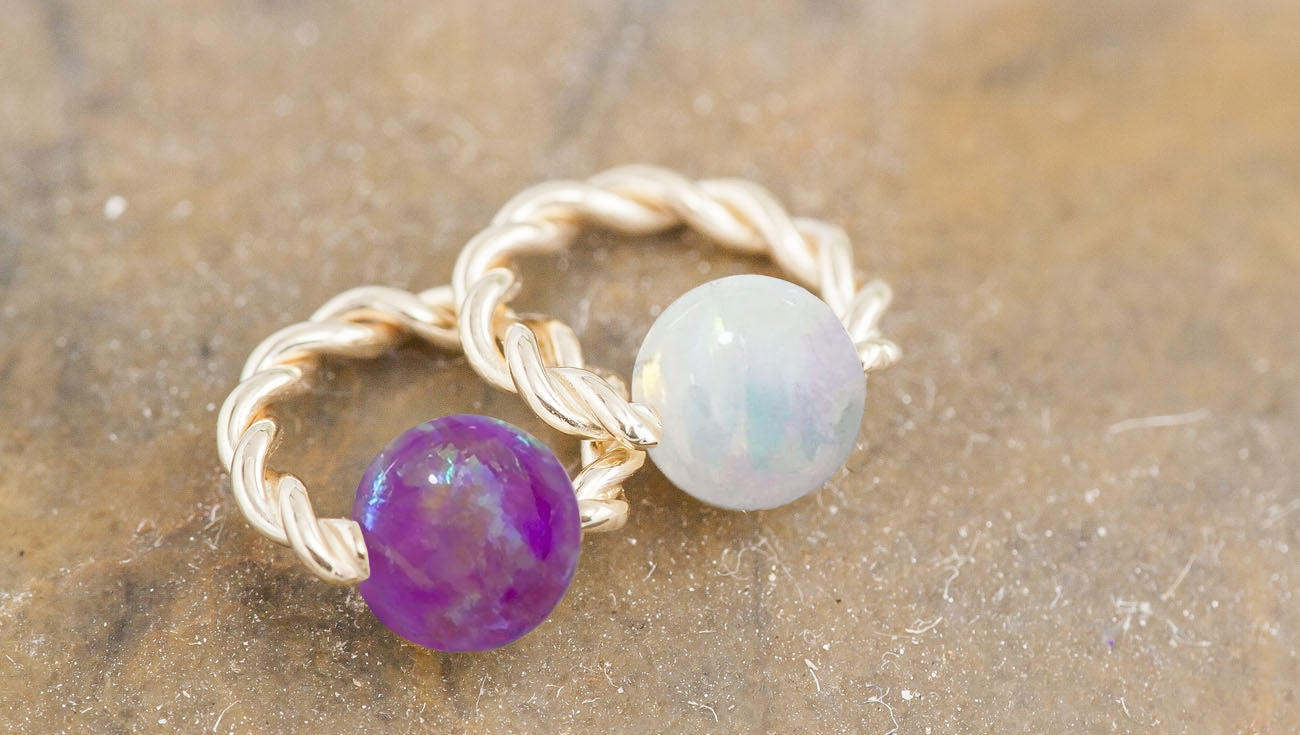

Synthetic opals are opals created in a lab. It uses a method that copies natural opal formation, making synthetic opals chemically the same as natural opals. For all intents and purposes, synthetic opals are real opals, they’re just not found in nature.
Since synthetic opals are created in a lab, they often boast a brighter color and more tones than natural opals. Furthermore, they’re typically less expensive. Colorful opals are quite rare in nature, which drives the cost up. Synthetic opals allow you to have that gorgeous tone without paying the price for a rare gemstone.
Should I Buy Genuine Opals Or Synthetic Opals?
This largely depends upon your personal preference. Here are some things to consider.
While the process to create synthetic opals is improving all the time, there are still slight differences between synthetic opals and natural opals. For example, the color of a synthetic opal is often more brilliant than the color of a natural opal. If you’d like something more colorful, then a synthetic opal is the way to go. However, opal experts will likely be able to tell that it’s synthetic.
On the converse side, we can control the colors of synthetic opals. This can result in more uniform color and exciting tones. If you want something swirled and brilliant, then going with a synthetic opal is a safe route.
Environmental impact is also something to think about. The vast majority of opals are mined in Australia, and although they take great care to ensure minimal environmental impact, any mining is going to have an effect. The creation of synthetic opals has a minimal environmental impact, making it a bit cleaner than natural opals.
Synthetic opals are also less expensive than natural opals. They’re a great option for those who want a beautiful gemstone on a budget.
You really can’t go wrong when choosing between synthetic and natural opals. It completely depends upon your personal preference.
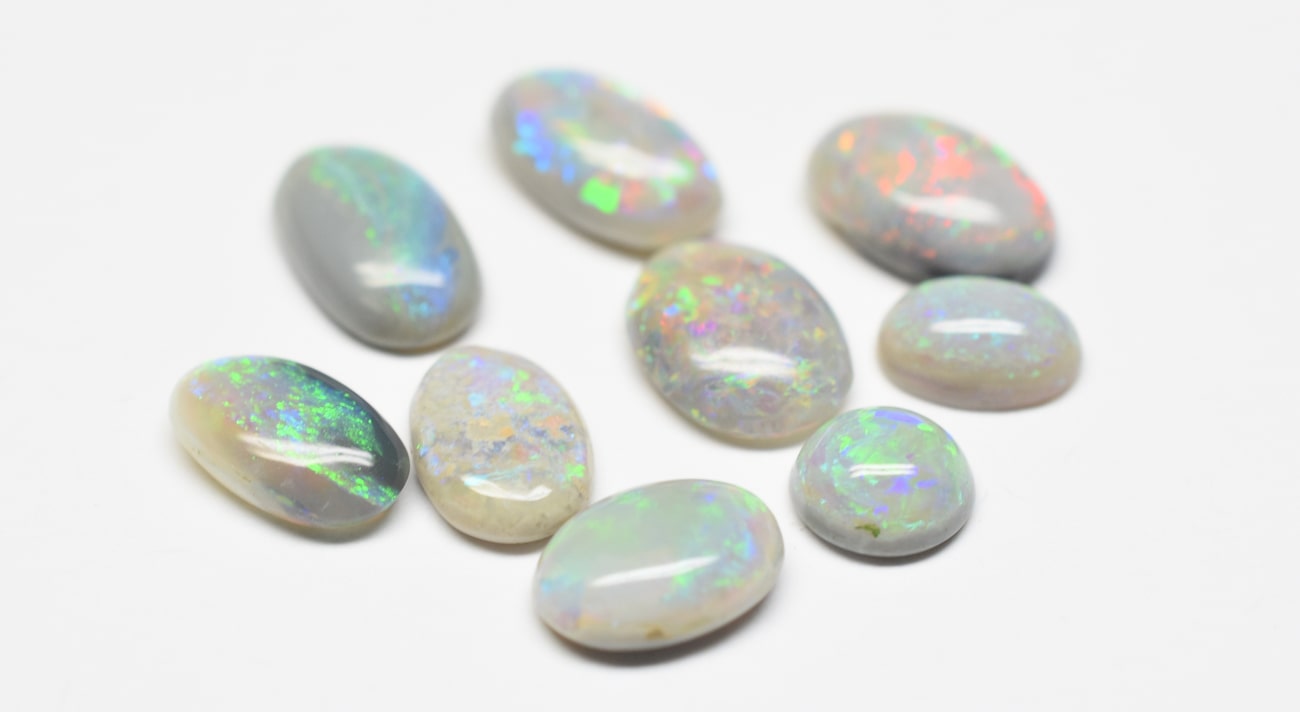

Opal Jewelry Care
Because opals are porous, there are certain things that you should avoid.
Opals should not be submerged in water for a significant period of time. If you need to wash your opals, find a gentle cloth and wipe them clean. Do not use harsh chemicals. Instead, use warm water and a bit of soap to gently wipe down your opal jewelry.
(Note: Water won’t immediately destroy your opals, so you can wear them while swimming or in the rain. However, it’s inadvisable to keep them submerged for long periods of time.)
Ultrasonic cleaners should be avoided for opals. These can cause the gemstones to crack.
If your opal becomes dull (which happens after normal wear and tear), you can bring it to a jeweler.
When in doubt, have your opals professionally cleaned. We can do that here at FreshTrends, too.
Opal Colors
While translucent or semi-translucent white is the most common opal color, these beautiful gemstones come in all tones, some rarer than others.
There are two different types of opals: the common opal and the precious opal.
Common opals lack the characteristic swirl. As you can guess from the name, these are what most opals are. While they don’t have the swirls of a precious opal, they do come in many beautiful colors. Since they lack the colorful swirl, these opals are often mistaken as other gemstones.
Precious opals are quite rare. These are the ones that boast the amazing swirls. Precious opals come in many different colors, but because of their rarity, they can be expensive.
Part of the draw of synthetic opals is that they can look like precious opals, but you don’t have to break the bank to own one. A well-made synthetic opal can be indistinguishable from a precious opal with the naked eye.
Not sure if the opal look is for you? Here are some stunning opal styles to offer inspiration.






